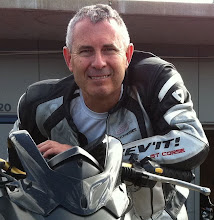After the death of his son at the hands of the Athenians, Minos successfully waged war against them, and in retribution demanded that seven young men and maidens of Athens be brought to his castle annually to be fed to the Minotaur. Athenian Theseus, with the help of MInos' daughter Ariadne, eventually slaughtered the Minotaur in the labyrinth, and led the Athenians who were to be the third sacrifice to safety by retracing his steps courtesy of a ball of string. Sadly in his moment of triumph, Theseus forgot to signal his successful mission on his return to Athens by hoisting a white sail, and his father, believing his son to be dead, hurled himself off a cliff into the sea in sorrow.
With this Greek tragedy strongly in our minds, we make our way to the ancient Minoan palace at Knossos. Would there be any traces of Daedalus' handiwork after 4,000 years?
We peer down reconstructed rooms, but there's no sign or description of a labyrinth - was it all just a myth?
Certainly bulls figure strongly in the frescoes, decorations, and even drinking vessels.
Bull-wrangling was apparently very popular then, with women getting in on the act as well.
If you're wondering why something so old looks so well preserved, with shiny red perfectly formed columns, you have English archeologist Arthur Evans to thank (or condemn and fed to the Minotaur as the case may be).
In his rush to excavate and reconstruct (using concrete) he made a number of assumptions which later archeologists are now questioning. Certainly his work has added to the sense of how the Minoans lived (and they lived very well, including having manually flushed toilets), but having the old and the new juxtaposed detracts from the overall effect. Still worth a visit though, and you can see where the Romans got a lot of their ideas from.
We drop off our little Emo Panda at the airport and catch a bus into town. Like Chania it's a walled city, but sadly the central part of town was badly damaged by German bombing, and has been rebuilt in an ugly "modern" style.
Fortunately the Venetian fort remains.
But apart for some picturesque fishing boats the rest of the town hasn't got a lot going for it.
Motorbikes are everywhere, and it's the best way to get around the narrow streets where cars park haphazardly, frequently jamming them. Most bikes are scooters, but every now and then you'll see big adventure bikes, with BMWs prominent.
We bus to our hotel, Manos Studios, on the cheaper and seedier west side of town. This time we get dropped off at the right place, and after settling in dine locally in a big family restaurant. So big it has a supervised playroom for the kids while Mum and Dad socialise with friends - good idea (and no it wasn't McDonalds)! Dinner was washed down by more gratis Raki, but try as I might I can't develop a taste for the stuff.
Our ferry to Santorini leaves early on Wednesday morning, and we're reliably informed a bus comes past every 15 minutes to take us into town. We arrive at the stop just after 7am, and our stress levels are rising as 7.20 comes and goes. But just on 7.30 it arrives, and we make the Seajet catamaran ferry with time to spare.
It's a bit windy, and the sea is picking up with a fairly heavy swell. Strangely the sun moves from being on the right side of the boat to the left side - then the loud speaker announcement. We're returning to Heraklion due to rough conditions. Bummer! As we leave the boat there is no announcement as to what we should do or when the next sailing is. Joining other angry and confused tourists, we head down to the booking office and rebook for Thursday. Fingers crossed for better weather.
So we have an unplanned day in Heraklion. We meet up with Ronnie and Cheryl from Singapore, and they suggest we try their hotel in town, which while more expensive is perfectly adequate.
We check out the Archaeological Museum. The Minoans certainly had a sense humour - these are drinking vessels!
There's a bizarre modern art exhibition on which we stumble into - lots of fearsome creatures, but surprisingly no Minotaur.
Personally I think the Cretans could get a lot of mileage from the Minotaur story, or perhaps their heritage won't allow them to acknowledge the triumph of the mainland Greeks. That would likely be it - they're a proud people and throughout history have battled invaders, whether mainlanders, Romans, Arabs, Venetians, Turks, or Germans. Fortunately, invading tourists are treated far more hospitably, and we've really enjoyed our time here. Definitely a place to recommend, but come in May if you want to walk the gorges.
- Posted using BlogPress from my iPad
